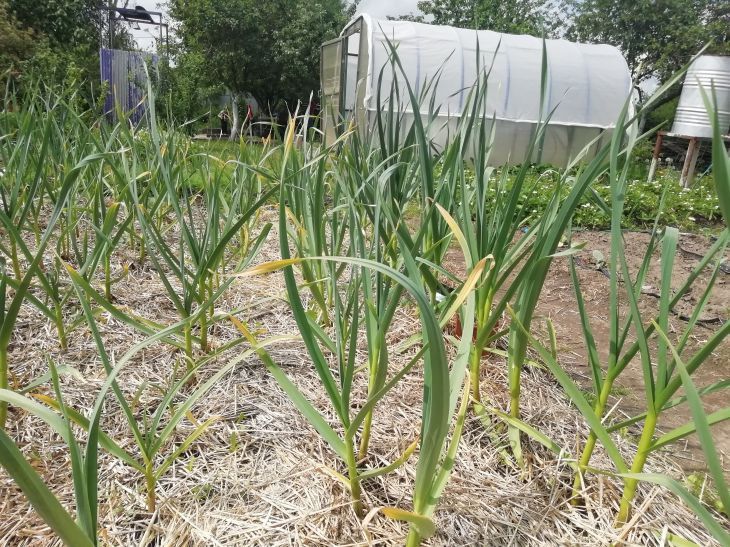July is a critical month for garlic, when the plant completes its growing season and begins to form heads.
At this time, garlic is especially vulnerable to various diseases and pests, which can significantly reduce the yield.
Experienced gardeners know that proper treatment of garlic in midsummer can be the key to obtaining a rich and healthy harvest.
What means and methods are most effective for protecting this aromatic crop?
Prevention of fungal diseases
The damp and warm weather of July creates ideal conditions for the development of fungal diseases of garlic, such as fusarium and gray mold.

To prevent these problems, it is effective to use Bordeaux mixture or copper sulfate.
The treatment should be carried out in the evening to avoid leaf burns. The solution is prepared at a rate of 100 grams of copper sulfate per 10 liters of water.
Pest control
Onion fly and garlic nematode are the main enemies of garlic in midsummer. Both chemical and folk remedies are used to combat them.
Spraying plants with a solution of mustard powder (100 grams per 10 liters of water) or garlic infusion is considered effective.
The latter is prepared by infusing 200 grams of crushed cloves in 10 liters of water for 24 hours.
Fertilizer for growth enhancement
July is the last month when garlic actively gains weight. To enhance the growth of heads, it is effective to use potassium-phosphorus fertilizers.
You can use ready-made complex fertilizers or prepare a solution yourself by mixing 30 grams of superphosphate and 15 grams of potassium sulfate per 10 liters of water. Fertilizing is carried out by watering under the root.
Treatment for yellowing leaves
Yellowing garlic leaves in July may be a sign of nitrogen deficiency or nematode infestation.
To solve this problem, it is effective to use a urea solution (20 grams per 10 liters of water) as foliar feeding. Spraying is carried out in the evening, avoiding the solution getting on the heads of garlic.
Protection from sunburn
On hot July days, garlic may suffer from sunburn, especially if the plants were previously weakened by diseases or pests.
For protection, you can use a solution of calcium nitrate (20 grams per 10 liters of water), which strengthens the cell walls of plants and increases their resistance to high temperatures.
Treatment for bacterial infections
Bacterial diseases can be a serious problem for garlic in midsummer.
For prevention and treatment, it is effective to use iodine solution (10 ml of iodine per 10 liters of water) or potassium permanganate (faint pink solution).
These products have a powerful antibacterial effect and help prevent the development of infections.
Mulching to retain moisture
Although mulching is not a direct treatment for garlic, this method is extremely important in July to retain soil moisture and prevent the root system from overheating.
Mown grass, straw or special mulching materials can be used as mulch, laying them in a 2-3 cm layer between the rows of garlic.
Treatment with growth stimulants
To strengthen the immunity of plants and stimulate the growth of garlic heads in July, you can use biological growth stimulants such as "Epin" or "Zircon".
These preparations help plants better cope with stress factors and increase their resistance to diseases.
Earlier we talked about how to feed watermelons.








